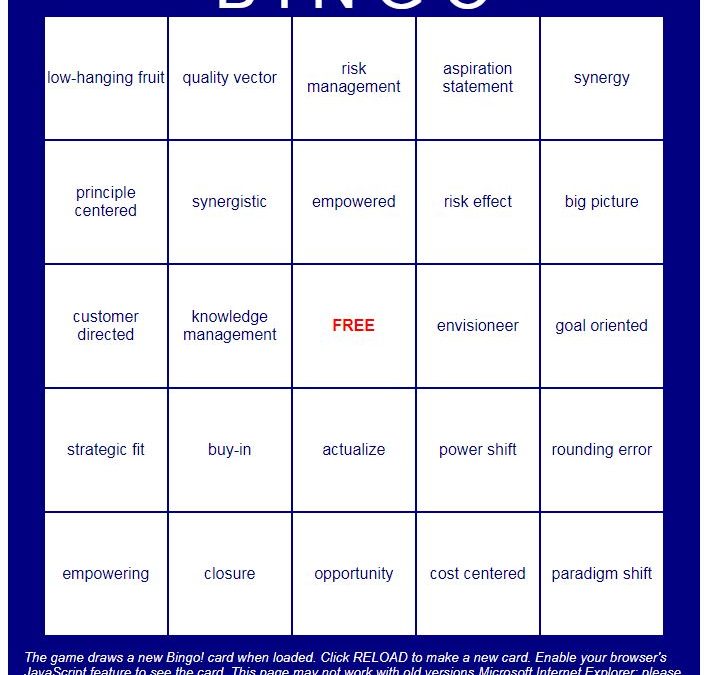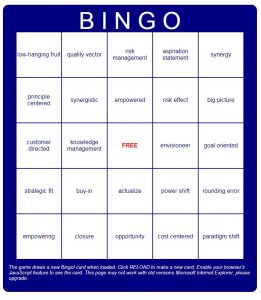
by Ken Krause | Dec 5, 2018 | Blog
The writing “Bible” for public relations is the AP stylebook. Anytime a PR professional (or anyone writing for media publication for that matter) is unsure of what to do, such as whether to capitalize an executive’s title in a press release, a quick glance at the print or online version will provide the correct answer. (For the record, the answer is “no” as this blog post points out.)
This reliance on the AP stylebook can lead one to think that its rules are all set in stone. But one would be wrong, as the post, “10 Recent AP Stylebook Changes and Reminders You Should Know About,” from Cision points out.
Whether you are debating whether the correct spelling for a particular type of wine is syrah or shiraz, wondering whether someone who uses the emergency department a lot should be labeled a frequent flyer or frequent flier (the former is correct), or how to use a number in a headline (use numerals for all, even though in the body you write out one through nine and then go to numerals from 10 on), the AP stylebook has the answers. And it’s continually being adjusted, so don’t assume!
To make sure you’re on top of your AP stylebook game, be sure to check out the full post here.

by Ken Krause | Jul 25, 2018 | Blog
For many writers, including (especially?) this one, analogies are one of the most important and commonly used tools in our toolbox. Relating a new or complex topic, such as just about anything in health IT (HIT), to a familiar example readers already know and understand seems like a good way to shorten the learning curve and ultimately move the sales needle.
Of course, not everyone buys into that idea. “Our target audience is made up of serious and highly educated people,” some say. “They don’t need some silly reference to cars, or movies, or building a house to understand our products/services. They just want the facts.”
That’s why I was so excited to discover the work of Robert A. Bjork, Ph.D., a Distinguished Research Professor at UCLA who specializes in cognitive psychology. Dr. Bjork’s research on how we learn shows “If information is studied so that it can be interpreted in relation to other things in memory, learning is much more powerful.” In other words, if you want someone to understand a new concept, it helps if they can relate it to what they already know and understand.
So it turns out there’s actually some science to the use of analogies. Giving information context, or “seating” it within what someone already knows (to use Dr. Bjork’s term) helps readers comprehend the information faster.
That’s where analogies can bring a lot of value. You start with something simple and familiar to get them thinking in the right direction. You then show how the new, complex concept fits within that familiar landscape.
Because you have already set the context, you’re far more likely to get the target audience to start nodding their heads in agreement. As any good salesperson can tell you, gaining that agreement is an important key to closing the sale.
Going deeper
Using analogies also helps ease readers into deeper conversation. It’s like opening a serious lecture with a joke, or sprucing up the front of your house when you’re trying to sell it to make it more inviting to prospective buyers. (See what I did there?)
First you capture their interest, then you get into the meat of what you want to say. That works a lot better than just launching right into the detailed information.
Another reason analogies help is they can take what might otherwise be a dry, technical topic and spice it up like adding a good rub to a steak before grilling it. (I’m on a roll now!) The steak is still the star, but the rub helps bring out all the flavor the steak has to offer.
Editor reaction
One more good reason to use analogies is in my experience, most editors like them. Especially editors of publications that cover technology products for business or even technical audiences.
They get tons of contributed articles that sound like they were written by engineers for engineers. The articles convey facts, but they don’t “grab” readers and compel them to pick up the publication.
A good analogy can help spur reader interest, which is the editor’s main goal. Throughout my career I’ve received many nice notes from editors, including some from very technical publications, thanking our clients for taking such an interesting perspective and writing an article people might actually want to read.
Now, that doesn’t mean you should always try to work an analogy into every byline, blog post, or other content. Even I don’t do that. Sometimes playing it straight is the right approach to take, whether that’s dictated by the publication or the subject matter.
But where you can, and where it works, using analogies is a great way to draw your audience in and help them quickly understand the key point you’re trying to convey.

by Ken Krause | Apr 4, 2018 | Blog
One of the biggest changes that has happened in healthcare IT (HIT) public relations over the last 10 years is the increased demand for vendor-neutral byline articles, blog posts, and other materials.
It makes sense from the publications business model perspective. With ever-thinner margins they can’t afford to keep a legion of writers on-staff, or even to pay a legion of freelancers to write for them.
So, they supplement their own articles with content provided by various vendors. The caveat, of course, is that it must be vendor-neutral. In other words, it can’t overtly promote a particular company’s products or services. Instead, it must address a general industry topic, or adopt a general industry point of view.
While it makes sense to those of us directly involved in HIT PR, the idea of being vendor-neutral doesn’t always appeal to everyone within the organization. Especially those who are closest to the products, such as product managers.
“What’s the point of writing an article or a blog post if we can’t link back to our product (or service)?” they’ll ask. “Do we think customers or prospects will hunt for it on their own?”
While it’s easy to understand their concern, it represents transactional thinking. They expect readers will be so wowed by a product or service that they’ll click on the link immediately. And start engaging in the sales process.
That would be nice. But it doesn’t represent reality. Most products and services in HIT tend to have long sales cycles due to the cost, complexity, or disruption involved in replacing what an organization is already doing with a new solution.
That begs the question, “If the goal isn’t to secure a direct sale, then where’s the value in contributing the article at all?” Actually, there are several benefits.
Opening the conversation
In some cases, organizations who have been doing things a certain way for a long period of time may not realize they have a need. Or there is a different, better way to accomplish what they’re doing.
For example, a health payer may have systems and technology in place that enables them to process claims at a rate that keeps them profitable. But they may not realize they could be doing it in one-quarter of the time at one-eighth of the cost.
Or a provider may have analytics that are giving them a comprehensive view of what is happening in the organization. But they may not realize the same data could be telling them what to do next instead of looking back on what they’ve already done.
The vendor-neutral article or other materials become the opening salvo, alerting them to possibilities they haven’t even considered. That doesn’t mean they’re going to run right out with a credit card in their hands. But if they come to realize everything isn’t as hunky-dory as they thought, it creates an opening where none existed before. And guess who they’re going to look to when they start looking into solutions?
Establishing expertise around a topic
What if they organization realizes on its own that it needs to make a change? If the decision-makers don’t know how to address it internally, or they don’t have the resources to dedicate to it, most likely they’re going to perform some type of search to see who has expertise around that topic.
Returning results tied to articles from respected industry publications will have far more credibility than simply returning sales sheets. It will show your organization understands the problems HIT faces and is trying to help solve them. As opposed to your competitors who are simply trying to sell products.
Offering these vendor-neutral articles or other materials in a knowledge center on your website also helps establish your expertise. And your desire to work with them as a partner.
By demonstrating you understand what is happening within the big picture of healthcare, customers and prospects will get more of a feeling you’ll help them address their specific issues. Rather than just try to sell them whatever product you have that comes closest.
Once they feel you understand their needs, you can direct them to the product(s) or service(s) that address their issues.
Building your brand
Most vendor-neutral materials are created with the express desire to have an immediate impact on sales at some level. But they also provide another valuable function. They help build the brands of companies as well as the individuals attached to the materials.
Typically, we will ask clients what they want to be known for in a branding exercise. The answer is never a product. It’s always some sort of solution to an industry problem.
There’s no better way to get that message out there than to create materials that support this point of view. If you want to be known as the company that simplifies collecting from patients, producing a series of materials that explain what the need is and what needs to be done, at a high level, helps you capture that position. Especially if all your competitors are only offering up product-related materials on their own websites.
Establishing a strong brand gives buyers confidence that they are making a safe choice in a risky, uncertain world. That’s especially valuable for start-ups and/or companies venturing into new areas. You’ll be chosen more often if you look like the smart choice.
Accelerating the sales cycle
One of the least-understood aspects to public relations, especially in the digital age, is the value doesn’t come solely from the original placement. It’s what you do with the placement afterwards that really makes the difference.
A vendor-neutral article that has been published in a respected industry media outlet opens up all sorts of additional, sales-accelerating opportunities.
It can be added to your website, preferably in a knowledge center as mentioned earlier. That way, when a customer or prospect is looking around your website they get a sense that your organization is an industry expert, not just a seller of products.
It gives salespeople another reason to contact customers and prospects with a twist. An email that shares knowledge from company experts is far more likely to be read than another overt sales pitch.
Sales can use it both in an email blast to everyone and as an answer to specific inquiries, too. Imagine the power of a response that includes both the vendor-neutral article and the product or service that fulfills the needs the article lays out.
Vendor-neutral materials are perfect for sharing on social media. The organization can use its own channels, and even post in groups it belongs to (where appropriate). High-quality content will be of much greater interest than a product message that can be easily dismissed.
The more you use them, the more customers and prospects will become groomed to the idea that you have the solutions they need.
Taking the long view
For most HIT products and services, the sales cycle is a long one. It takes multiple touches, many of which will come before you’re even aware a buyer is interested.
Authoring vendor-neutral articles, blog posts, or other content helps you raise awareness of your organization. It also demonstrates you understand the challenges facing customers and prospects. It’s then a shorter leap to demonstrating how your products or services solve those challenges.

by Ken Krause | Jan 10, 2018 | Blog
One of the core tenets of journalism (and public relations, which at most colleges is part of the School of Journalism) is the use of AP style when writing. AP, of course, stands for the Associated Press, whose manual and rules are drilled into journalism students from the day they begin writing for their school newspaper (or whatever aspiring writers write for in school these days).
For a PR professional, use of AP style demonstrates that you are a journalism insider. That’s very important when you’re pitching a byline article, or a press release, or some other piece of content that needs to be reviewed and approved by an editor. It gives you a certain level of credibility, or at least signals to an editor that he or she won’t have to spend untold hours bringing your writing up to par.
Failure to use it, on the other hand, is generally seen as an admission that you are an ignorant hack whose writing skills would be best applied to warning labels on pet supplies. No one wants that.
This, of course, is the reason Amendola Communications is very careful about conforming to AP style. It benefits not only our agency but our clients.
Still, for those who aren’t familiar with AP style, some of its peccadillos can be a bit off-putting. They’re not used to seeing things written that way, and their preference for the approach they’re used to can become a bone of contention that slows down the writing and approval process.
Here’s the reality of the situation. When you are writing for your own blog, or marketing materials, or internal memos, etc. go ahead and let your preferences dictate the style. But when you’re writing something you’d like to have published by an independent media outlet, it’s important to follow AP style.
So what does that mean from a practical standpoint? Glad you asked! Here are five examples of the differences between regular people style and AP style. Those of you who are familiar with it please feel free to add additional common uses in the comments section.
Capitalizing corporate titles or not
This is the one that probably causes more consternation between Amendola Communications account managers and clients, so let’s start there.
Most people are taught in business writing courses to capitalize someone’s title, such as President, or Chief Medical Officer, or Vice President of Some Made Up Area that Sounds Good on LinkedIn. It’s viewed as disrespectful not to capitalize the title.
That is not the case in AP style. Titles are never capitalized, unless they are used as part of the person’s identity. Which means you can refer to President Trump with capital letters, but you would write Donald J. Trump is president of the United States.
This, by the way, is one of the easiest tests for editors and journalists to see who knows what they’re doing. Get it right in your press release and you’ve removed a barrier to publishing.
Spelling out acronyms
While the healthcare industry loves it some acronyms, AP style is not as much of a fan. So while you may believe everyone you’re communicating with knows EHR stands for electronic health record, AP style still demands that you spell it out anyway.
Usually, you will spell it out first, then put the acronym in parenthesis afterward, i.e., electronic health record (EHR). The exception is in quotes, which means if you’re going to use an acronym in a quote try to spell it out ahead of time, just to be safe. Of course, some acronyms that are widely known, such as FBI or CIA, do not need to be spelled out. But if you’re writing about them and you work in health IT, you probably have bigger issues than AP style facing you.
Bonus fun fact #1: According to the AP Style guide, using the initialism CEO by itself is acceptable, although they still recommend spelling it out somewhere else. Other titles, such as CFO or CMO, must always be spelled out because they are less universal.
Writing out numbers
This is another of those interesting AP style oddities. When writing out single numbers from 0-9, AP style dictates you spell out the number rather than use the numeral. So zero for 0, one for 1, all the way up to nine (9). Once you’re in double digits, you use the numerals, so 10, 11, and so forth.
That also applies to numbers used in combination, which can get very awkward. You would write “there are 10 three-bedroom homes on this block” or “Put the three of us down for 12 medical devices each.”
State abbreviations
The AP has its own set of state abbreviations that are preferred, especially for use in a dateline. They are different (and longer) in most cases from the more-familiar postal codes, so it’s worth looking up. Or, you can just follow this link, although they’re not laid out quite as nicely as you might like.
Here are a couple of examples. The postal code for California is CA, but the AP style abbreviation is Calif. The postal code for Arizona, where Amendola Communications is headquartered, is AZ whereas the AP style abbreviation is Ariz.
Two-word states tend to get different treatment. While New Hampshire uses an N and an H for both, the postal code is NH while the AP style abbreviation is N.H. The extra periods make a difference.
Bonus fun fact #2: When you’re in the body of a press release, AP style stresses spelling out the name of the state rather than using abbreviations of any kind.
Bonus fun fact #3: Certain large cities, such as Chicago, Los Angeles, Phoenix, and New York, don’t require a state at all in the dateline. In fact, including a state again makes you look like you don’t know what you’re doing.
Other types of abbreviations
For pretty much any other type of abbreviation, you’re always going to use periods after each letter. That includes professional credentials (M.D. instead of MD, Ph.D. instead of PhD) and time designations (p.m. instead of pm, E.S.T. instead of Eastern Standard Time).
Yes, it can be very odd-looking, especially when you say an event will begin at 1:00 p.m. E.S.T., and yes, all those periods kind of get in the way. But that’s the way, uh-huh uh-huh, they like it. (Sorry, channeling my inner Kate Donlon there.)
So many rules
This is just a small sampling of some of the most common issues that seem to crop up from time to time. There are many more. In fact, the AP puts out an entire manual with everything you could possibly wonder about, which they will be more than happy to sell you if you’re interested. It’s available in both paper and electronic form.
Or, you can just count on your friendly neighborhood PR pros to get it right for you. It’s all part of the service.

by Ken Krause | Sep 20, 2017 | Blog
Having worked across a number of industries during my career, I feel pretty safe in saying no industry loves it jargon (and acronyms) like healthcare. The general technology industry probably comes in a close second, but for pure technical mumbo-jumbo you can’t beat healthcare.
Part of it, I think, is that the healthcare industry is filled with a lot of smart people. Because of that, everyone feels like they have to sound like the infamous “smartest person in the room.” So they load up their content or their speeches or even their everyday conversations with a lot of jargon designed to give that impression.
Nowhere does that become more apparent than when I go to check the website of a new client or prospect to start familiarizing myself with their business. I can’t tell you how many times I’ve come away after reading page upon page asking “But what do you do?”
Yes, you’re open and interoperable. Yes you follow evidence-based best practices. Yes, your methodology is transformative and sustainable. Yes, your subject matter experts have a wealth of experience in solving the toughest problems facing the industry. But again, what do you do?
If I, who has an employment-based incentive for comprehending your inscrutable jargon can’t figure out what you’re trying to say, what do you think happens to the typical prospect doing a fly-by? They see a bunch of words and terms they’ve heard 100 times before. They try to determine if they’re in the right place, looking at the right company.
But if it doesn’t come to them immediately, odds are they just move on. You lose.
Keep it simple
You’ve probably heard this quote, often erroneously attributed to Albert Einstein: If you can’t explain it simply, you don’t understand it well enough. Ol Al may not have said it, but there is a lot of truth to it nonetheless.
I know this from personal experience. Thanks to my work here at Amendola Communications, I have had the opportunity to speak with some incredibly smart, accomplished people. They are the kind of people who are leading all of healthcare toward amazing new discoveries and ways of working.
While they come from different backgrounds and have expertise in very different areas, the one trait they all had in common was their ability to get their point across in a way that the average person could understand.
Some were talking about advanced analytics and machine learning. Some were talking about the nuances of health insurance. Some were literally talking about curing cancer. But you never walked away from the conversation wonder what the H-E-double hockey sticks they were talking about.
Instead, you walked away energized and inspired. Not to mention excited about the possibilities for the future and how their companies were creating them.
Learning to speak/write plainly
Becoming a clear communicator like that isn’t easy. It actually takes a lot of work to make your communication sound effortless yet on-target.
The first step, quite honestly, is not being afraid that people won’t think you’re smart if you don’t pack your content or your spoken words with industry jargon. In business there are no points awarded simply because you sound “smarter” than everyone else. The money goes to the people who show they understand the problem and how to solve it.
Once you’ve bought into that philosophy, start looking through your current content, perhaps with a Business Buzzwords Bingo card in hand. If you find you are winning within the first three paragraphs of a piece of content, especially your company website, you know you have some work to do.
paragraphs of a piece of content, especially your company website, you know you have some work to do.
Now listen to speeches from great communicators or read materials from a technically sophisticated consumer product. Whether you were a fan of Ronald Reagan’s or not, the man knew how to sell an entire nation on a concept. Is what you’re doing any different? Or as my colleague Michelle Noteboom points out, see how Donald Trump approaches the same challenge. You may not like what he says, but you must admit he has a way of stating his positions simply.
Car companies, especially the high-end ones, offer a great example of plain speaking. Even when they’re talking technical specs, they do it in a way that focuses on why you should care.
Apple has always had a good handle on that as well. While everyone else in the industry was talking about jitter rates and Hz-related info, they were telling how you could get 1,000 songs in your pocket. Everyone can understand that.
There’s the key. It’s not about the bells and whistles in your product. No one cares how much effort you had to go through to develop it. That’s your problem.
What they want to know is what’s in it for them. The easier you make it to understand that, the more intrigued they will be.
Read my lips: no more jargon
Well, very little anyway. It is healthcare, after all, and there are technical terms that must be used at times. But if you try to ensure that any jargon you use is essential to explaining your position, and that there’s no other way to say it, you’ll likely find prospects staying longer and going deeper on your website. And more willing to engage with you all the way to a sale.





